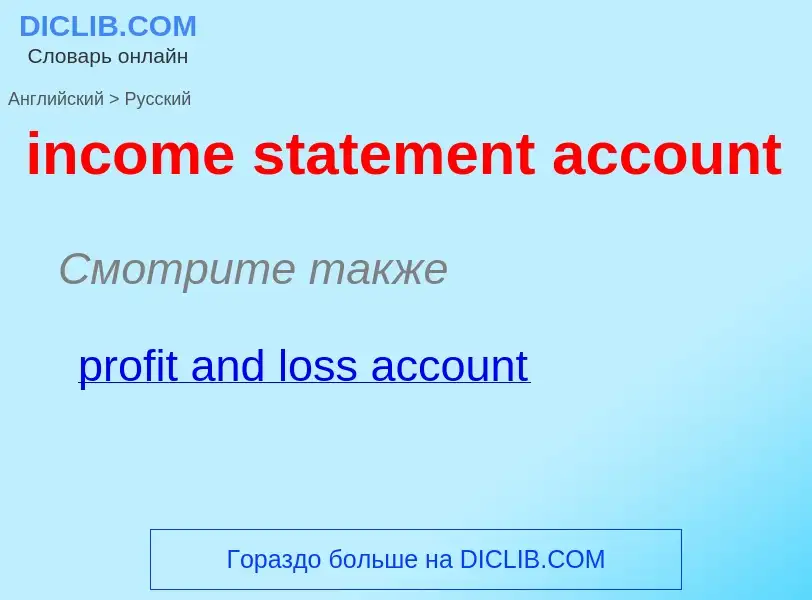Перевод и анализ слов искусственным интеллектом ChatGPT
На этой странице Вы можете получить подробный анализ слова или словосочетания, произведенный с помощью лучшей на сегодняшний день технологии искусственного интеллекта:
- как употребляется слово
- частота употребления
- используется оно чаще в устной или письменной речи
- варианты перевода слова
- примеры употребления (несколько фраз с переводом)
- этимология
income statement account - перевод на Английский
Смотрите также
общая лексика
оперативный [текущий] отчет (отражающий сведения о текущих событиях, работе и т. п.)
бухгалтерский учет
операционный отчет
внутренний отчет о прибылях и убытках (документ, который отражает затраты и доход за определенный период; предназначен для внутреннего управленческого контроля; обычно сопоставляется со сметой/бюджетом для выявления отклонений)
Смотрите также
финансы
декларация о доходах (официальный документ, содержащий сведения о доходах его автора, как правило, в целях налогообложения)
Смотрите также
сокращение
P&L account
P/L account
P+L account
бухгалтерский учет
счет прибылей и убытком [доходов и расходов]
результативный счет (бухгалтерский счет, на котором учитываются поступление и расходование средств компании)
Великобритания
отчет о прибылях и убытках
отчет о результатах хозяйственной деятельности (один из отчетов, предусмотренных уставом большинства компаний с ограниченной ответственностью Великобритании; заполняется ежегодно и состоит из трех частей: первая - отчет об основных направлениях деятельности, результат этого счета - валовая прибыль (или убыток); вторая - отчет о доходах от всех других направлений деятельности, его результат - чистая прибыль (убыток) до вычета налогов (при вычитании налога с доходов корпораций получают чистую прибыль после вычета налогов); третья - отчет о распределении чистой прибыли после вычета налогов на дивиденды акционеров и на резервный капитал)
синоним
Смотрите также
Смотрите также
Определение
Википедия

A bank statement is an official summary of financial transactions occurring within a given period for each bank account held by a person or business with a financial institution. Such statements are prepared by the financial institution, are numbered and indicate the period covered by the statement, and may contain other relevant information for the account type, such as how much is payable by a certain date. The start date of the statement period is usually the day after the end of the previous statement period.
Once produced and delivered to the customer, details on the statement are not normally alterable; any error found would normally be corrected on a future statement, usually with some correspondence explaining the reason for the adjustment.
Bank statements are commonly used by the customer to monitor cash flow, check for possible fraudulent transactions, and perform bank reconciliations. Historically they have been printed on one or more pieces of paper, and either mailed directly to the account holder or kept at the financial institution's local branch for pick-up. In recent years there has been a shift towards paperless electronic statements, and many financial institutions now also offer direct downloads of financial information into the account holders' accounting software to streamline the reconciliation process. Bank statements are important documents and are usually required to be retained for audit and tax purposes for a period set by relevant tax authorities.
To enable account holders to track account activity on an ongoing basis, many financial institutions offer a non-official transaction history before the official bank statement is produced. Such activity may be viewed on or printed from the financial institution's website, a smartphone application, available via telephone banking, or printed by some ATMs.
Transaction histories or account balances may also be shared with other financial institutions, when the account holder gives permission, through open banking to provide services such as account aggregation. An aggregation service only lets the software view an account balance, not actual transactions.




